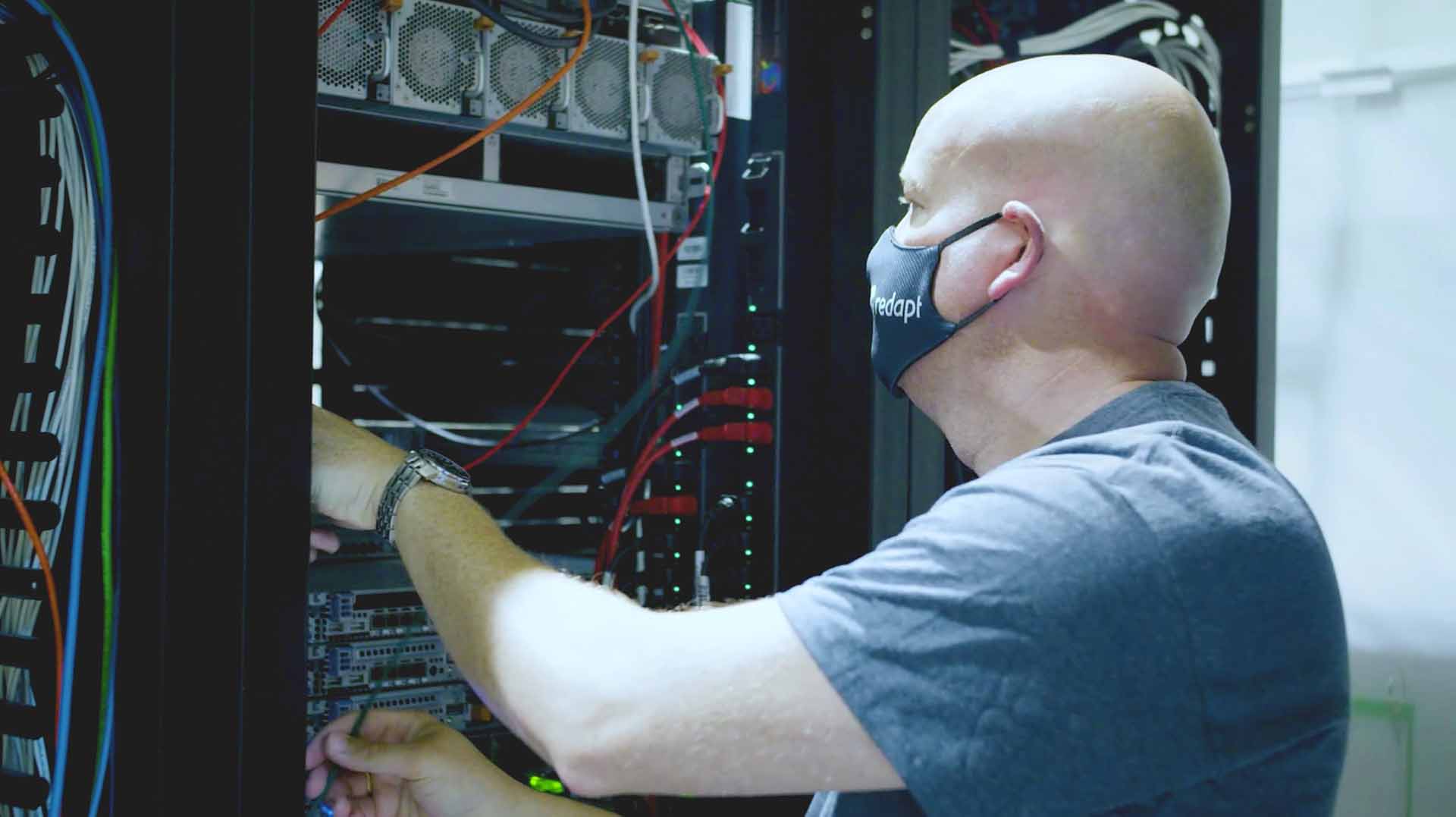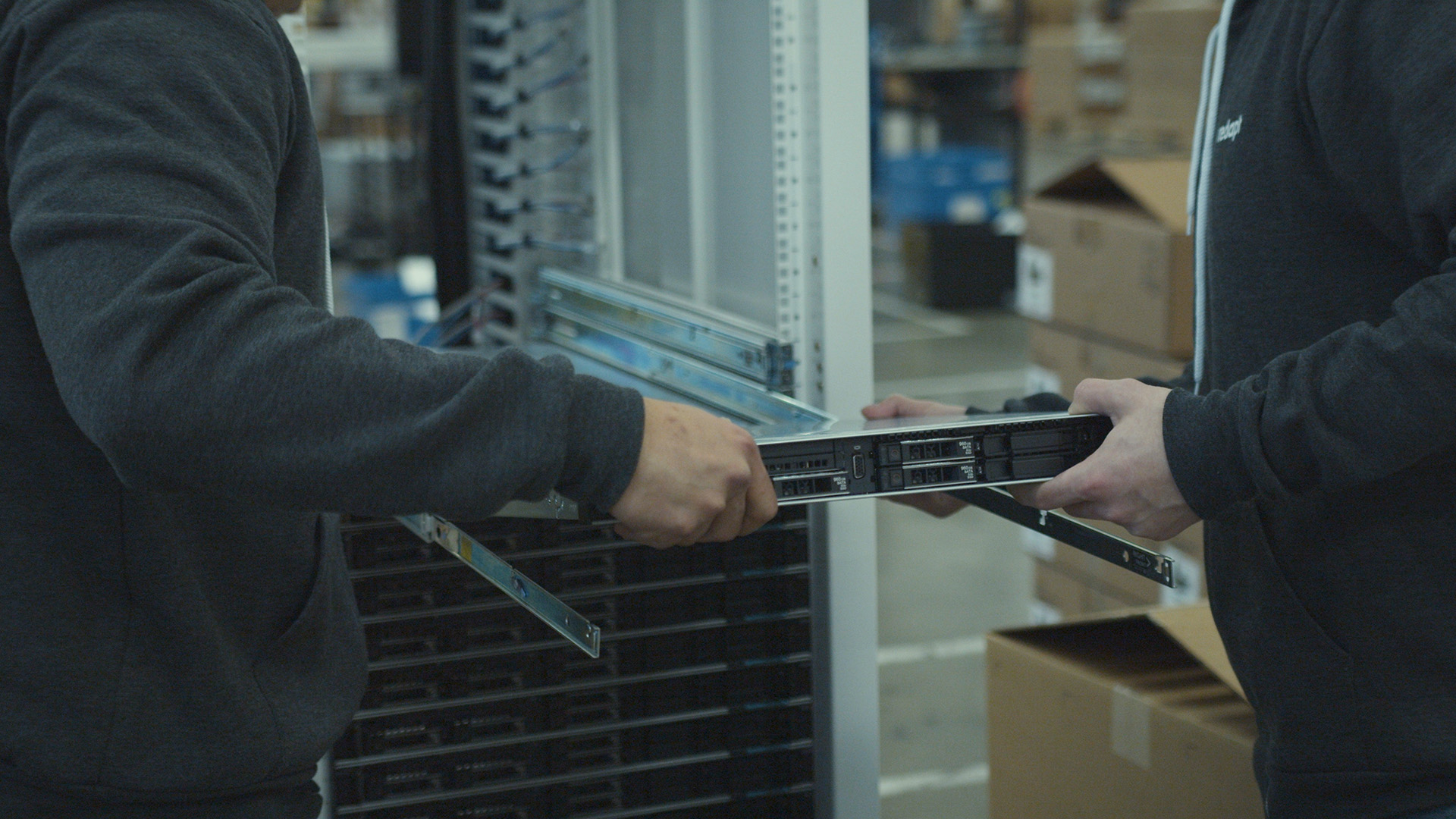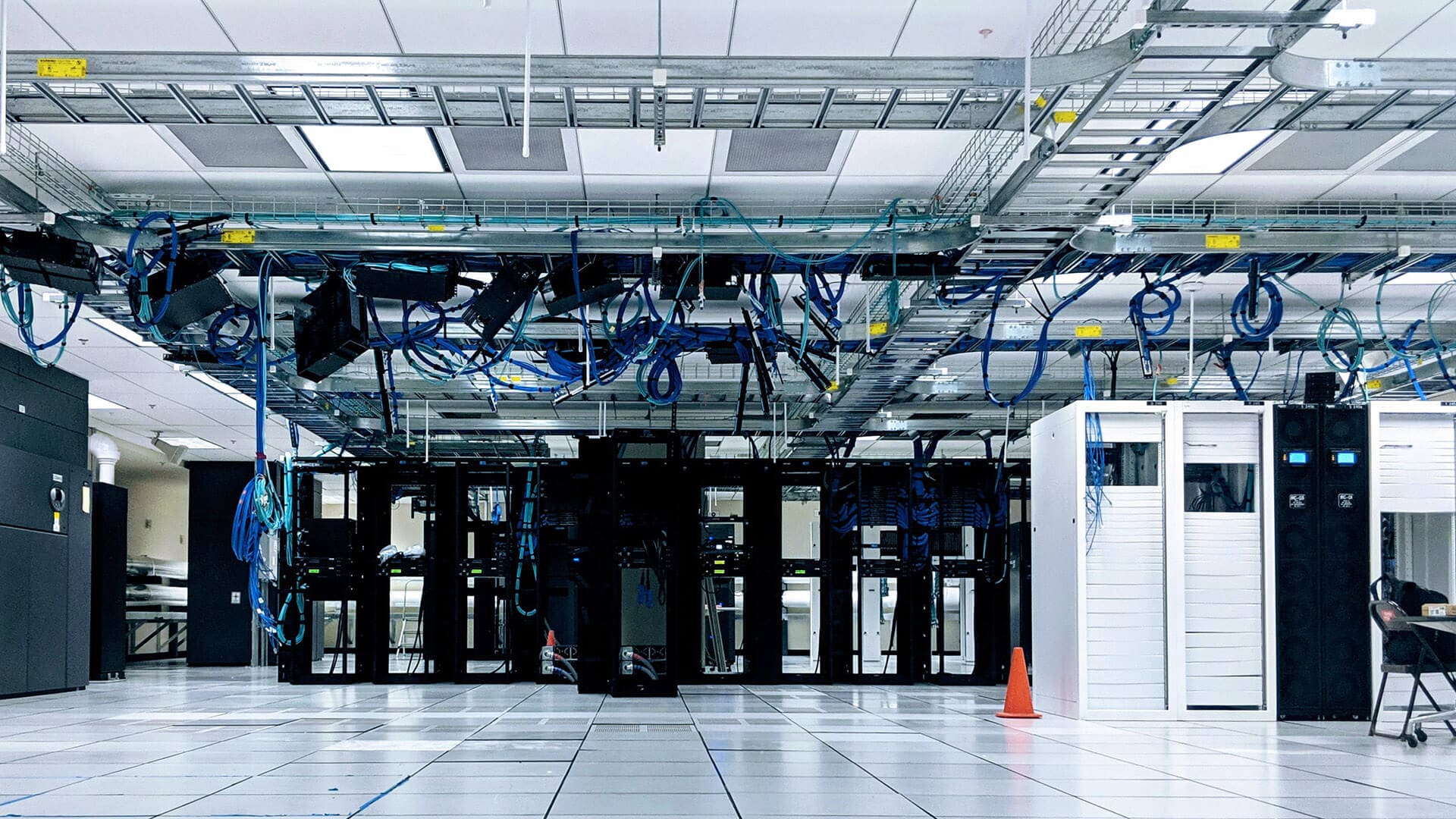In a perfect world, integrating new enterprise infrastructure would be as simple as purchasing preconstructed hardware and plugging it into your datacenter of choice.
In reality, though, the process of deploying new infrastructure—particularly at scale—is a long, complex, and detail-oriented process. A process that involves sound engineering, sturdy supply chain relationships, and global logistics capabilities.
Any hiccups in this process can create major headaches for your organization, from overspending on equipment to discovering your infrastructure is incompatible with your datacenter after it’s already been purchased and shipped.
If your organization is considering going the DIY route when it comes to infrastructure integration, here are five common challenges you can expect to encounter along your way.
 1. Designing the right solution
1. Designing the right solution
The architecture of your infrastructure is dictated by a number of factors, including your compute and capacity needs, whether you’re leveraging the hybrid cloud, and even the physical footprint of your datacenter.
Any misjudgment or miscalculation as you design your infrastructure comes with a substantial cost. Hardware can’t always be returned, most components are not off the shelf, and an error in anticipating OEM lead times can leave all the equipment you’ve purchased unassembled at an expensive holding location.
Because of all this, the most critical step in the infrastructure integration process is first article certification. Every piece of hardware, every component from sensors to switches to cables, needs to be signed off on before you even consider placing your first order.
 2. Managing supply chains
2. Managing supply chains
Every piece of datacenter infrastructure is made up of thousands of components, most of which are provided by different manufacturers and vendors.
Even if your organization has strong relationships with vendors, unforeseen events can interrupt the shipping of hardware you need.
Case in point: the 220,000-ton Ever Given, which became stuck in the Suez Canal earlier this year. For nearly a month, the massive container vessel acted as a roadblock to the canal where 12 percent of all global trade passes through, creating massive delays across industries.
While the Ever Given debacle was definitely an outlier, smaller disruptions like weather events can also blow up even your most thorough supply chain management plans—along with your budget.
For large companies (as in the Facebooks and Apples of the world), it makes economic sense to have entire departments dedicated to managing supply chains. But for most enterprises simply trying to deploy new infrastructure at the end of their life cycles, such an investment is not worthwhile.
 3. Building and testing
3. Building and testing
As the hardware and components from your design architecture arrive, they will need to be unpacked, organized, and assembled.
That means, if you’re going the DIY route, you will need space to both receive every piece of hardware and construct your new infrastructure.
Datacenters are not built with assembly in mind, after all, so you will need to ensure your new server racks arrive turnkey ready—including cabling, labeling, and repackaging for shipping.
Similarly, it’s critical that you thoroughly test all new hardware you receive from an OEM, and that you have the expertise in-house to efficiently integrate—and test as well—any software you need up and running in the datacenter. Keep in mind that even the smallest of failures can lead to expensive and time-wasting delays.
 4. Navigating logistics
4. Navigating logistics
Datacenter locations are scattered by design, and it’s not uncommon for your organization to need to solve for logistics across regions—and continents—simultaneously.
Again, any new infrastructure not being used as quickly as possible has a negative effect on your bottom line, so it’s important that you navigate the complexities of global shipping as efficiently as possible.
You will also need skills on-hand at your infrastructure’s destination when it arrives, which means travel for a dedicated team or partnering with regional contractors to ensure your new hardware is installed correctly.
One other aspect that is often overlooked in the logistics process is the removal and disposal of any packaging your new hardware travels in. Datacenter infrastructure is delicate, and the datacenters themselves are not designed for large-scale disposal and recycling.
 5. Maintenance
5. Maintenance
Even perfectly designed, constructed, and installed infrastructure can fail, which means you will need ongoing support available to handle equipment breakdowns whenever and wherever they happen.
If your datacenter infrastructure needs are relatively small, paying for this ongoing support can be reasonable. But once your datacenter reaches racks in the thousands deployed in disparate locations, the size of that support needed can quickly become untenable from a business standpoint.
The easier way
Given these five challenges to DIY infrastructure deployment, it’s not surprising that a growing number of enterprises are partnering with integration services providers to manage every step in the process.
At Redapt, we are able to leverage our internal expertise and our long-standing supply chain relationships to greatly reduce the time and unexpected costs commonly associated with bringing new infrastructure online.
We will:
- Design solutions that perfectly fit your needs
- Provide you with detailed documentation on every component and piece of hardware
- Leverage our long-standing supply chain relationships and receive every piece of hardware at our secure facilities
- Build, integrate software, and thoroughly test all hardware and components
- Manage the logistics of deploying your new infrastructure at scale around the globe
- Ensure your new racks and servers arrive at their destination, are up and running properly, and that no packaging is left behind
- Provide you with ongoing support in the case of hardware failures or malfunctions at the datacenter
For more information about Redapt Integration Services, reach out to one of our experts. And to learn more about the benefits of modern enterprise infrastructure, download our free guide Taking the Leap with On-Premises or Co-Location Datacenters.
Categories
- Cloud Migration and Adoption
- Enterprise IT and Infrastructure
- Artificial Intelligence and Machine Learning
- Data Management and Analytics
- DevOps and Automation
- Cybersecurity and Compliance
- Application Modernization and Optimization
- Featured
- Managed Services & Cloud Cost Optimization
- News
- Workplace Modernization
- Tech We Like
- AWS
- Social Good News
- Cost Optimization
- Hybrid Cloud Strategy
- NVIDIA
- Application Development
- GPU




